Exercise 4.5
Make a Google Images search for ‘landscape’, ‘portrait’, or any ordinary subject such as ‘apple’ or ‘sunset’. Add a screengrab of a representative page to your learning log and note down the similarities you find between the images. Now take a number of your own photographs of the same subject, paying special attention to the ‘Creativity’ criteria at the end of Part One. You might like to make the subject appear ‘incidental’, for instance by using juxtaposition, focus or framing. Or you might begin with the observation of Ernst Haas, or the ‘camera vision’ of Bill Brandt. Add a final image to your learning log, together with a selection of preparatory shots. In your notes describe how your photograph differs from your Google Images source images of the same subject.
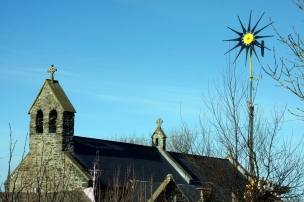
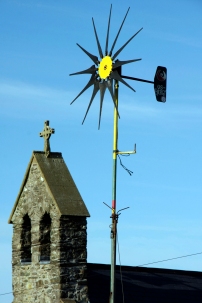
These images show how by moving around a subject you can present it in an entirely different way, in this case bringing two contrasting and unrelated subjects together to create a more interesting image.
I went through a similar process with this image moving until I could capture the weather vane next to a ferry on the sea.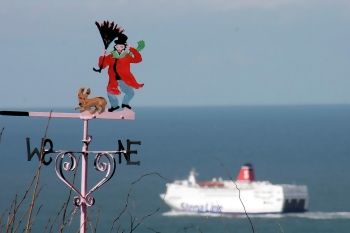
I then moved on as suggested to explore and compare subjects in the conventional sense and to present them in a more original way.
Welsh Mountains My google search for mountains generated images of mountaintops in the distance with beautiful skies around them and sculptured rocks and or green valley’s in front of them, many with lakes in addition. I then narrowed the search to the specific mountain that I would be working with, Carnengli in Pembrokeshire. This generated images of the rocky summit with beautiful blue skies behind and colourful heathland in the foreground.
Welsh Mountains Carningli Mountain
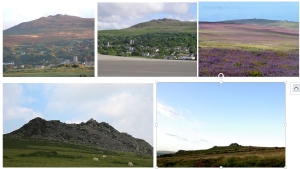
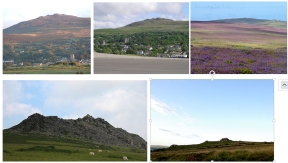
These images are conformist to views of mountains general, picturesque, with rolling landscapes in the foreground, interesting skies behind and strong summits. Carningli Mountain is traditionally shown with the gorse and heather fields in front of it and often the pretty village nestling below it. The summit and its context are presented with clarity.
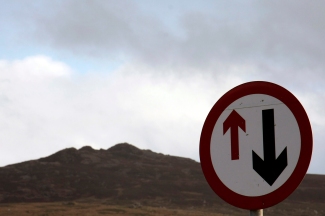
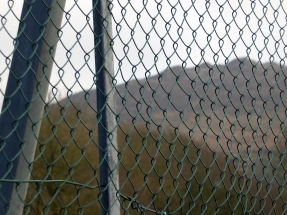
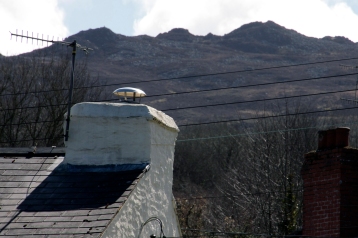 My shots include the summit so that a mountain summit (or Carningli in particular, to those local to it) is obvious. However I have is presented in an unconventional manner; either with the juxtaposition of the road sign (which was chosen for content and effect), as incidental appearing behind the fencing, or in a relationship to the chimney of a village house giving it an alternative context.
My shots include the summit so that a mountain summit (or Carningli in particular, to those local to it) is obvious. However I have is presented in an unconventional manner; either with the juxtaposition of the road sign (which was chosen for content and effect), as incidental appearing behind the fencing, or in a relationship to the chimney of a village house giving it an alternative context.
Strumble Head lighthouse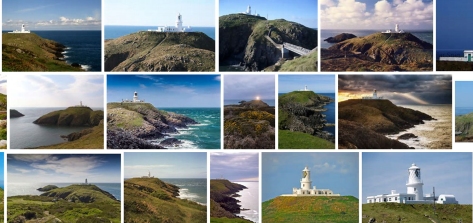
These google images are conventional in that they generally show a fairly complete view of the subject (lighthouse). The images show the wider context of the lighthouse (landscape) and present it with blue or dramatic skies and often picturesque seas.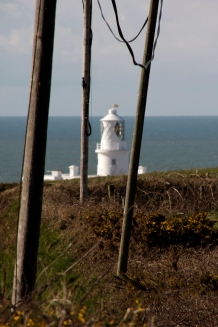
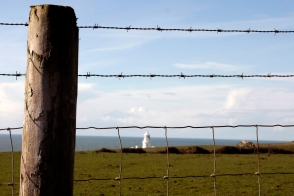
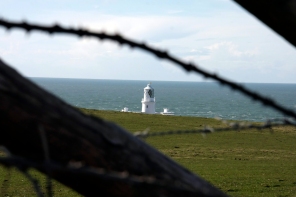
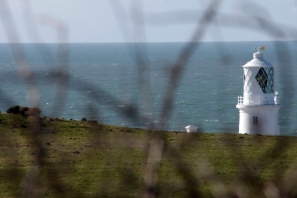

My images are less orthodox; their perspective, framing and or focus points create some relationships and contrasts and present the lighthouse as more abstract and incidental than in conventional images.
Norman church Towers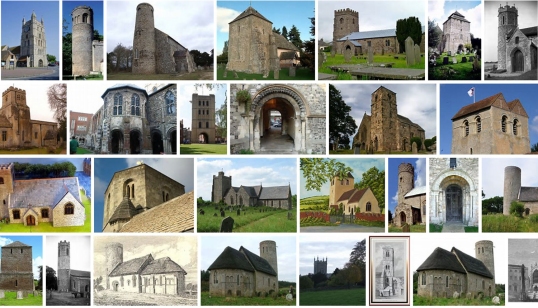
These google images generally present the towers in their context with the church. They most often have interesting skies and green grass in front of them. The towers are presented to highlight the importance of their size and shape. I offer some alternative images:
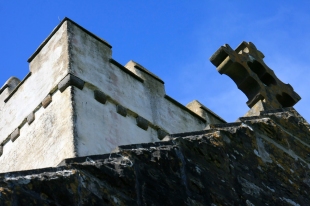
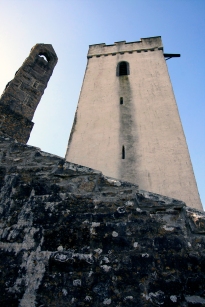
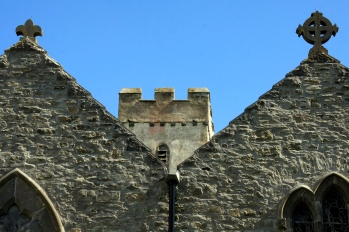 In the final image my positioning and framing of the Norman tower renders the tower diminutive in contrast to the church façade, so that it appears incidental; it is not obvious what its relationship is to the church building in front of it and there are less other contextual clues than is traditional. In retrospect I would like to have lined up the centre of the tower with the centre guttering on the church façade, which would have also provided a more perfect and unusual symmetry, however as the objective was to creative and experimental I believe that this images meets the criteria.
In the final image my positioning and framing of the Norman tower renders the tower diminutive in contrast to the church façade, so that it appears incidental; it is not obvious what its relationship is to the church building in front of it and there are less other contextual clues than is traditional. In retrospect I would like to have lined up the centre of the tower with the centre guttering on the church façade, which would have also provided a more perfect and unusual symmetry, however as the objective was to creative and experimental I believe that this images meets the criteria.

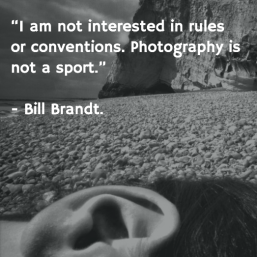 (Brandt, n.d)
(Brandt, n.d)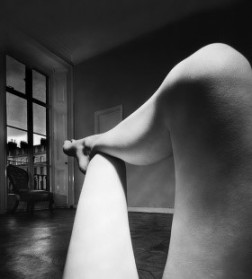 (Admin 2012)
(Admin 2012)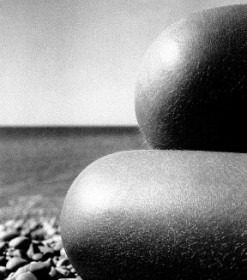 (Admin, 2012)
(Admin, 2012)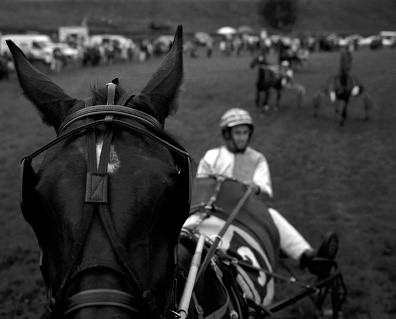 (Steele-Perkins, n.d)
(Steele-Perkins, n.d)